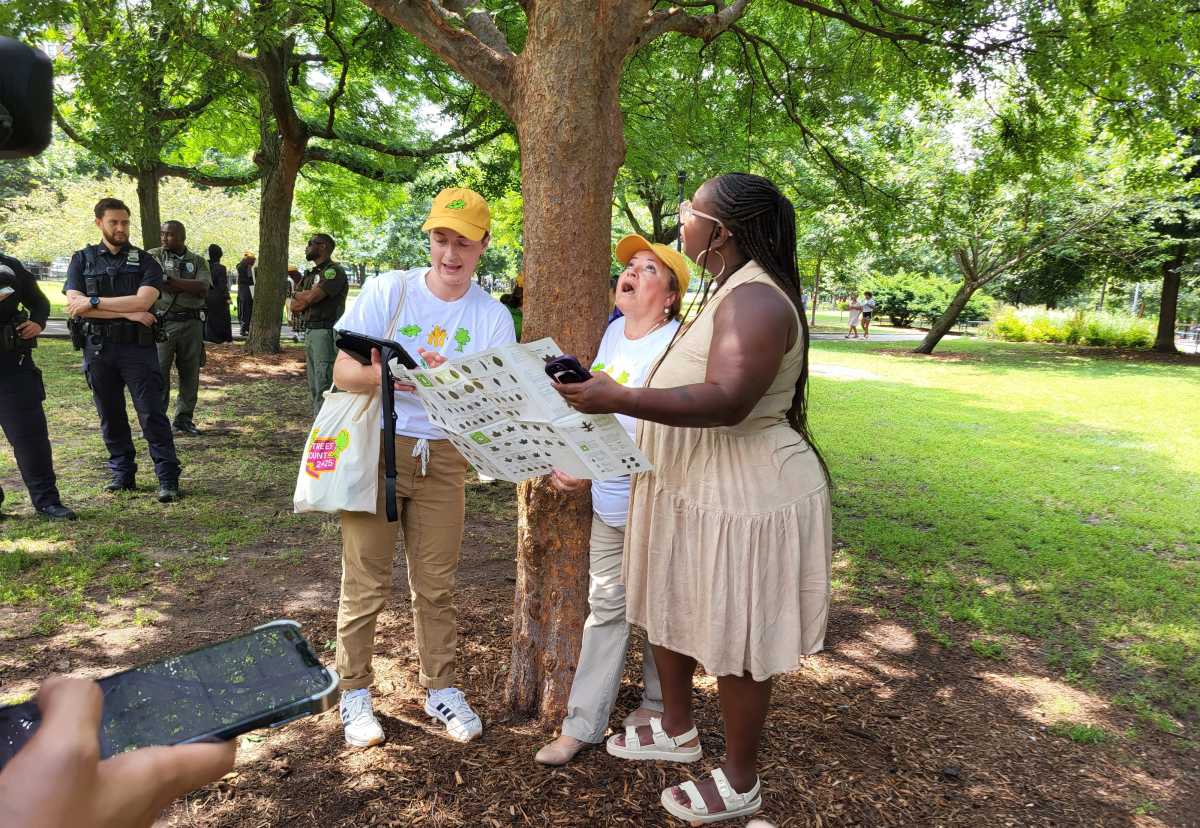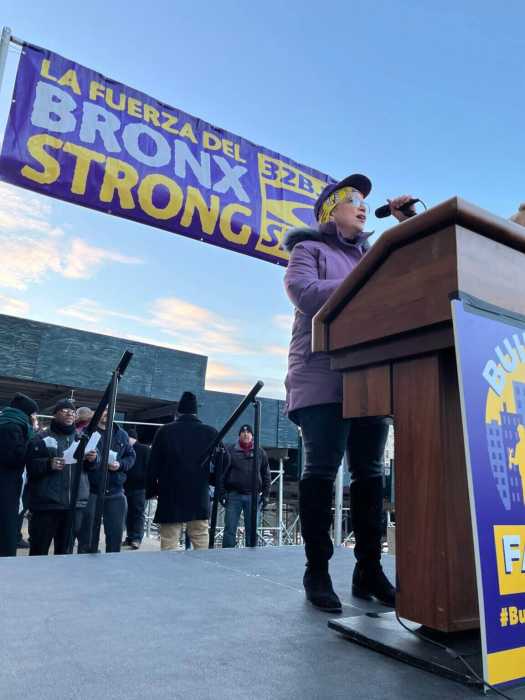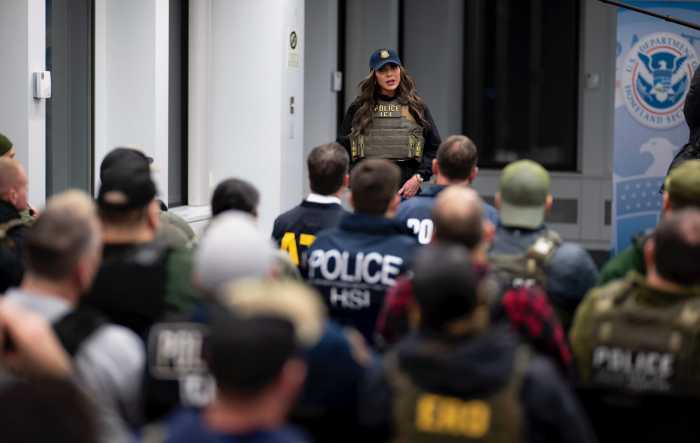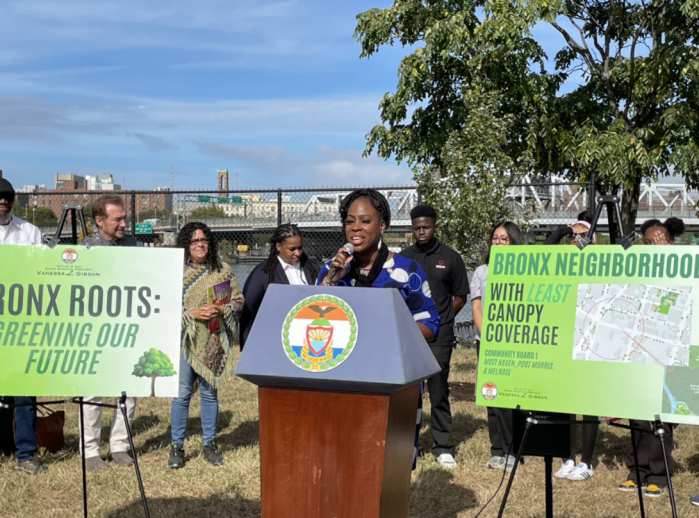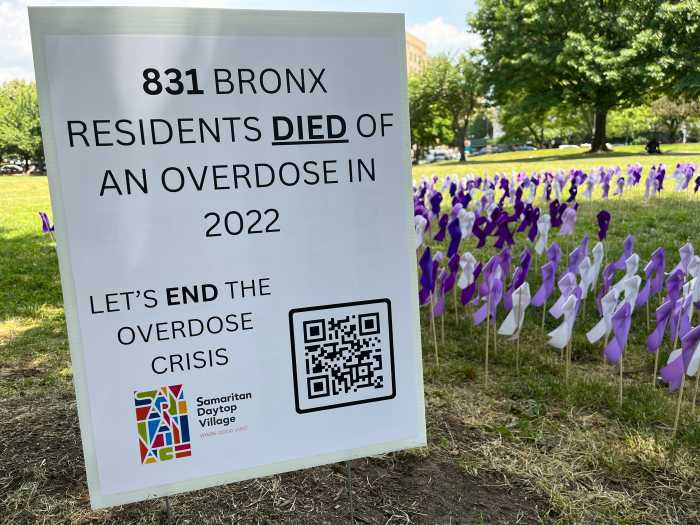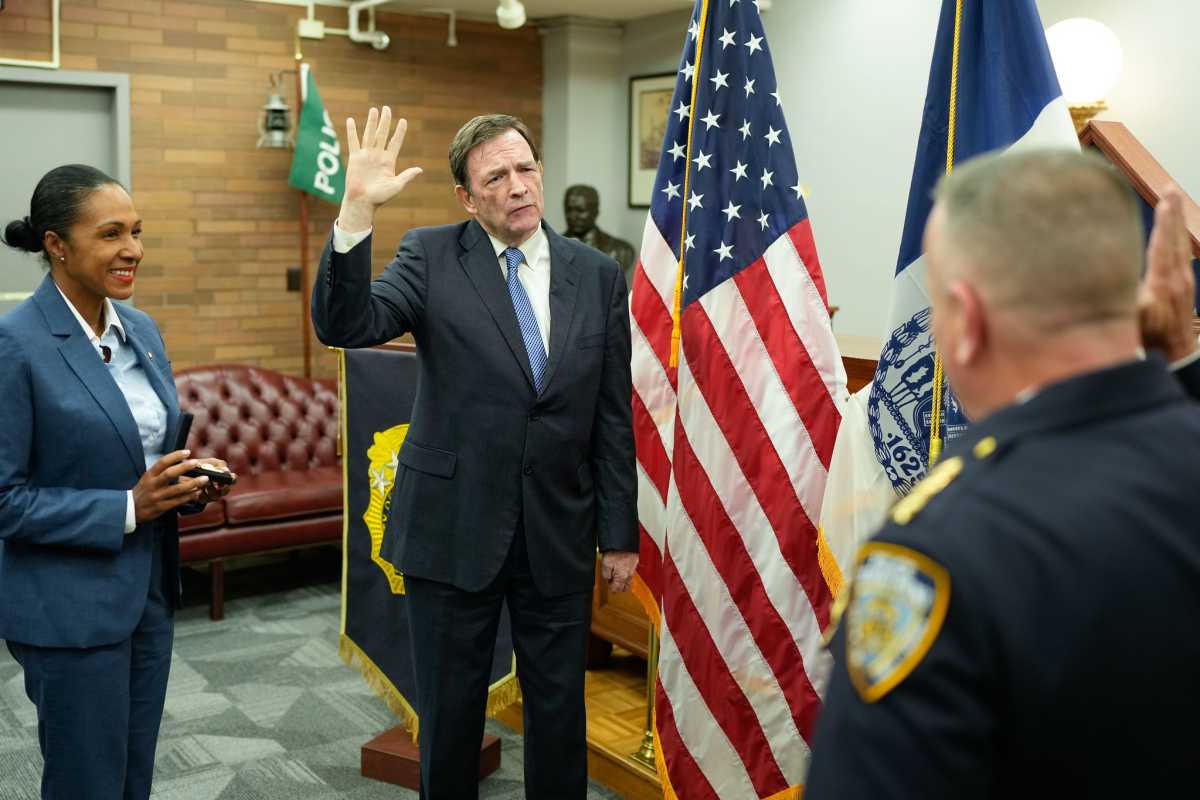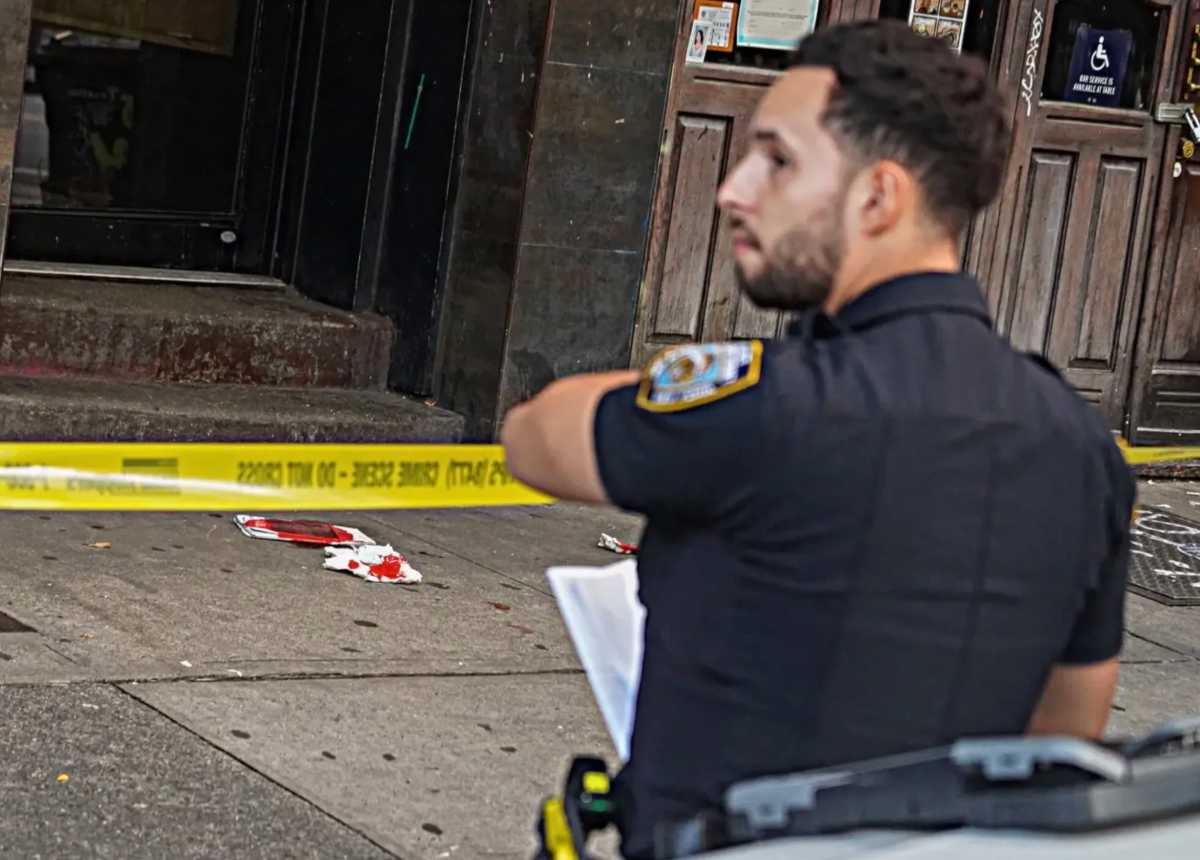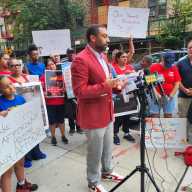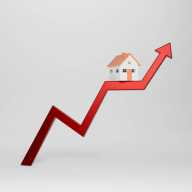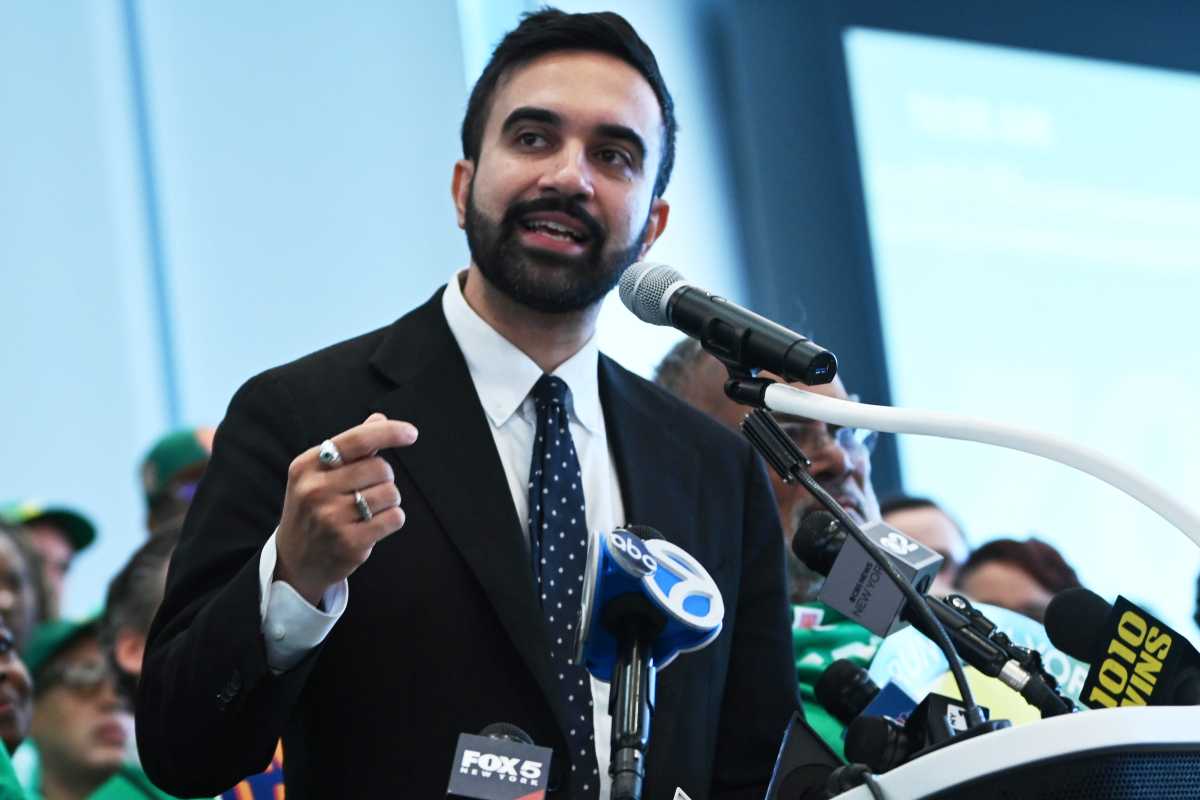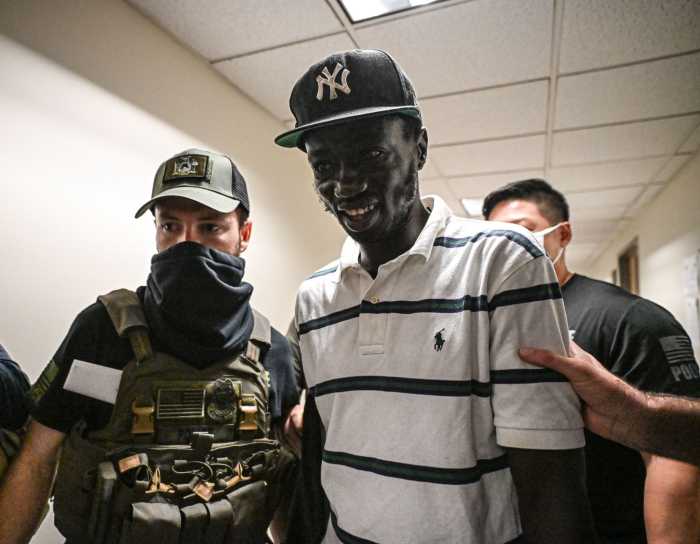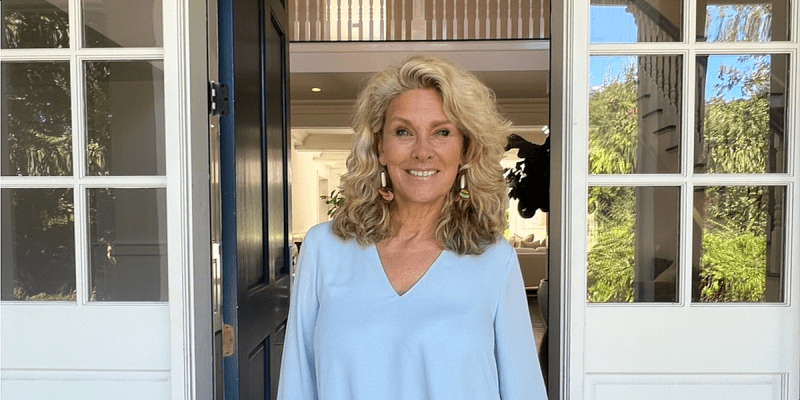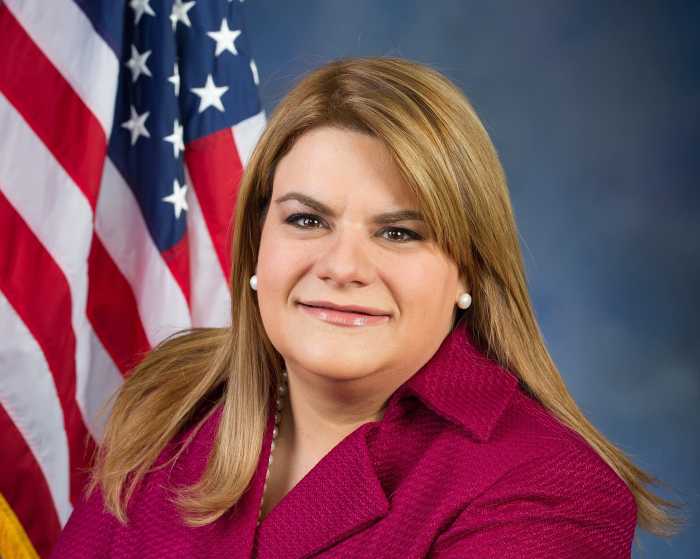On Tuesday, NYC Parks kicked off Trees Count 2025, the once-in-a-decade census of every tree in the city’s parks and streets.
Parks leaders, staff and volunteers gathered for a press conference at Joyce Kilmer Park near Yankee Stadium, where staff logged the millionth tree since the census began in 1995 and helped attendees document the first few trees of this year’s census.
The city’s trees provide many benefits, including heat reduction, stormwater management and pollution mitigation. Knowing the status and location of each tree is critical as city leaders plan for areas that need more coverage.
The massive census project takes two years and relies largely on volunteers to document each tree’s location, species, health and condition of its leaves, trunk and roots, all using an app called Field Maps.
Parks Commissioner Iris Rodriguez-Rosa officially kicked off what she called the “largest volunteer-driven urban forest survey in the nation.”
She said the census combines on-the-ground field work with “cutting-edge technology,” including a mobile app, radar-equipped vehicles, and AI computing. But the census isn’t just for the sake of counting; the information is used to track the condition of existing trees and identify areas in need of more throughout the city.
Trees: the green investment
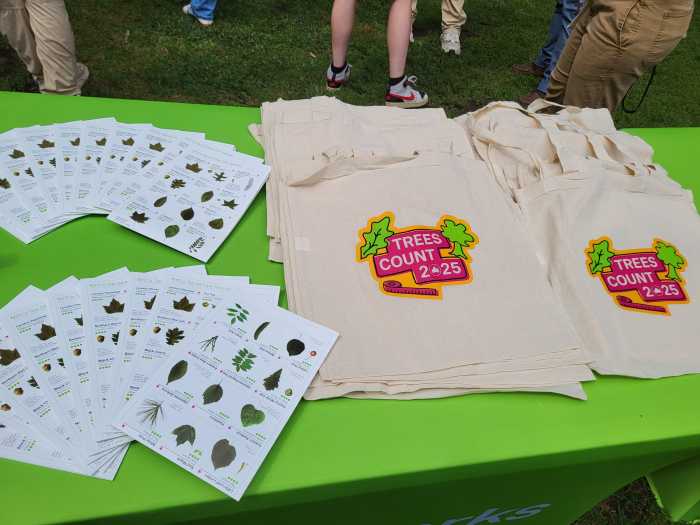
Council Member Althea Stevens, whose district includes Joyce Kilmer Park, said at the press conference that trees are critical to improving quality of life in the South Bronx, which has had historically high asthma rates and a lack of green, shady spaces, leaving residents sweltering more than necessary.
The tree count shows “how data and care go hand in hand,” Stevens said. “This initiative … ensures the Bronx isn’t left behind when we talk about sustainability, resilience and health.”
However, her enthusiasm for the tree census came with one caveat: she told the Bronx Times that, for the sake of seasonal allergy sufferers like her, she desperately hopes that the Parks Department will plant more female trees, because male trees shed more pollen into the air.
But even if they bring sneezing and a runny nose, “Trees are my spirit animal,” Stevens added.
Jennifer Greenfeld, deputy commissioner for environment and planning, said the city’s trees are also economically beneficial, providing a $5.60 return on every $1 spent on planting and care.
Each tree count since 1995 has provided more actionable data, incorporated new technology, and increased public engagement, all while “inspiring New Yorkers to care for urban forests,” Greenfeld said.
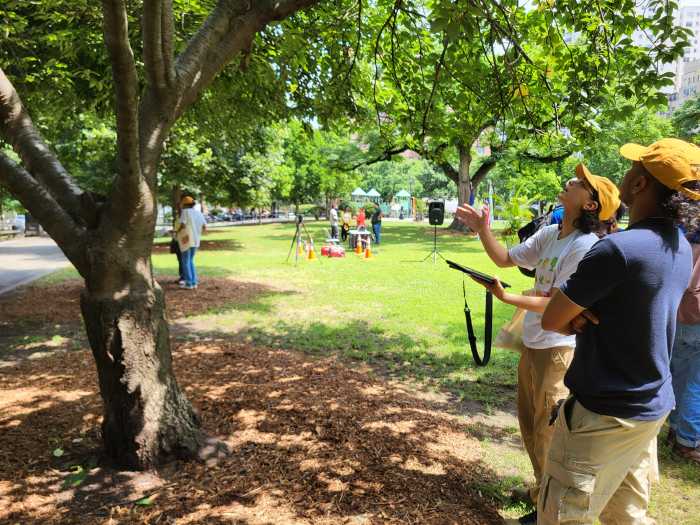
After the speaking program, attendees gathered around as staff counted the millionth tree overall and the first of the 2025 census: a lace bark elm, with a trunk diameter of 36 inches.
After examining the tree’s bark, leaves, canopy, and overall condition, it was assessed to be in good condition and logged in the Field Maps app. Census volunteers will be trained to analyze trees and use the app.
In addition to the tree count, city leaders are working on adding more trees and shade in parts of the city that need it most. Mayor Eric Adams has committed to equitably expanding the city’s overall tree canopy to 30%, currently up from about 22%.
Bronx Borough President Vanessa Gibson has advocated for expanded tree canopy in the borough, especially in the South Bronx, which has far less shade and green space than other parts of the borough.
People interested in volunteering for the 2025 Trees Count can visit this website for information.
Reach Emily Swanson at eswanson@schnepsmedia.com or (646) 717-0015. For more coverage, follow us on Twitter, Facebook and Instagram @bronxtimes

